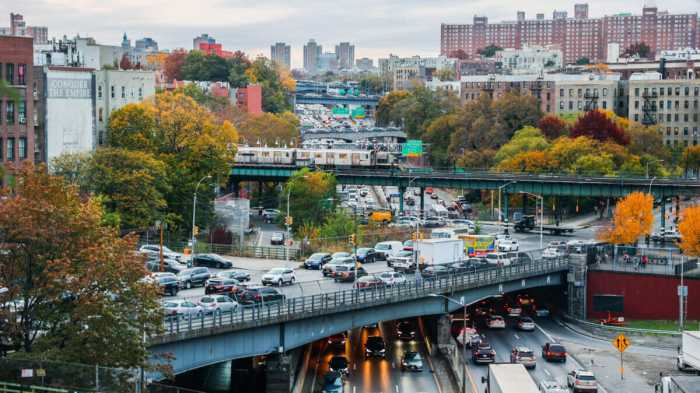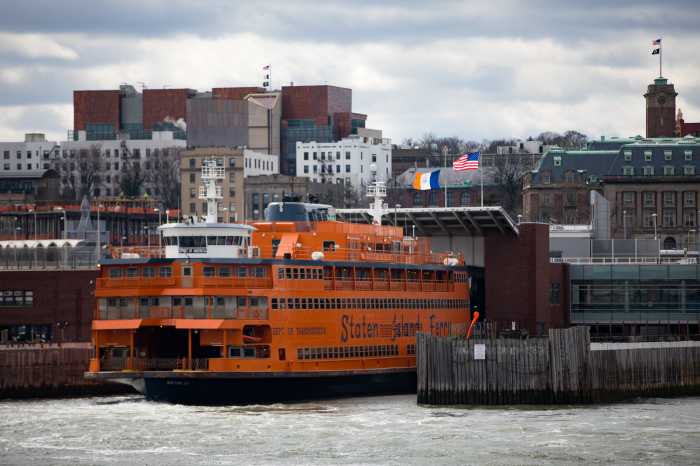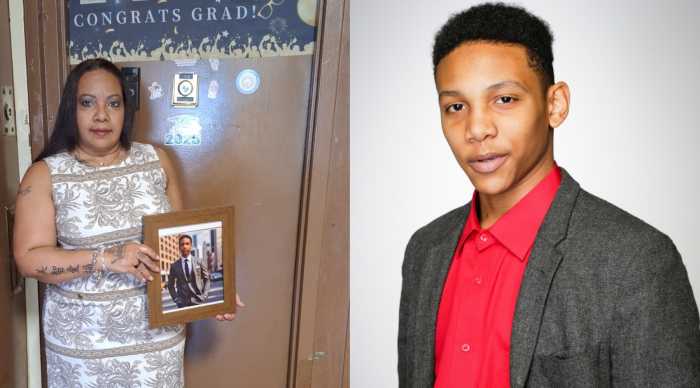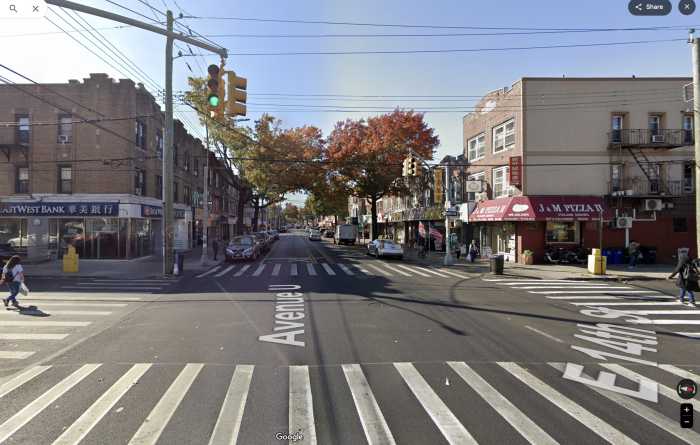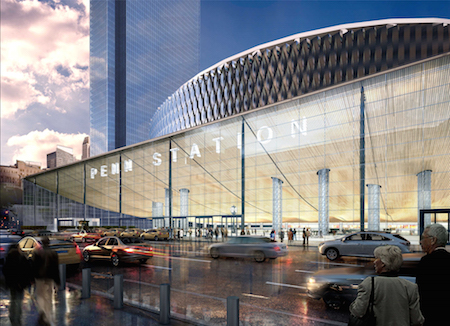
BY YANNIC RACK | In a double win for Manhattan’s West Side, Governor Andrew Cuomo laid out new plans last week to both finally expedite the stalled redevelopment of Pennsylvania Station and the James A. Farley Post Office on Eighth Avenue and to expand the Jacob K. Javits Convention Center to boost jobs and tourism in the area.
One big announcement was chasing the other, as Cuomo continued to unveil a slate of ambitious projects ahead of this week’s State of the State address.
“There is so much in this game plan, this agenda, that frankly we couldn’t fit it into one day and one speech, and we’re announcing it in components all throughout this week,” the governor said. “What happens tomorrow depends on what we do today.”
The projects both have a less than glorious past — a few years ago Cuomo even considered scrapping the Javits Center altogether, and the Penn Station project has been in limbo for a decade — but the announcements promise to soon bring even more activity to an area already bustling with development.
“The governor came into town and really made a big splash,” said Delores Rubin, the new chair of Community Board 4, which covers both the convention center as well as the post office.
Both announcements also earned the governor praise from local elected officials, who said the momentum on neighboring projects certainly played a part in jump-starting the Penn Station and Javits efforts.
“There’s a lot of excitement about the future of the West Side,” said State Senator Brad Hoylman, pointing to the current construction at Hudson Yards as well as other projects in the area, including a plan for a new Port Authority bus terminal and the already completed 7 train extension.
“That’s no doubt a driver for these projects,” he said.
City Councilmember Corey Johnson said, “What’s happening on the West Side of Manhattan, when you take together a new Penn Station, a new Moynihan Station, the Gateway Tunnel project, Hudson Yards rising, a renovated and expanded Javits Center, a new Port Authority bus terminal — these are projects that are of course going to physically reshape the West Side, but they’re transformational not just for these neighborhoods but also for the entire region.”
Between the governor’s two announcements, Johnson added, “This has been a great week for the West Side.”
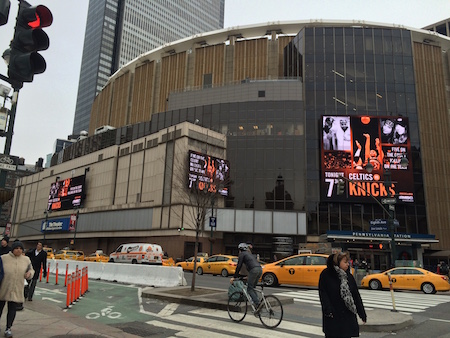
The renovation of Penn Station is part of Cuomo’s larger plan to revitalize New York’s infrastructure, which includes expanding the Long Island Rail Road (LIRR) as well as building a new LaGuardia airport and a new Tappan Zee Bridge across the Hudson River connecting Westchester and Rockland Counties.
The Penn Station plan would essentially renovate the existing station maze below Madison Square Garden, build a new train and retail hub within the block-long General Post Office across Eighth Avenue, and eventually link both facilities underground, to create what the governor has dubbed the “Empire Station Complex.”
“Penn Station is the analog to La Guardia,” Cuomo said, referring to the troubled airport that Vice President Joe Biden recently called something out of a third world country. “Let’s be honest, Penn Station has been wholly unacceptable for a long, long time.”
The governor said the rail terminal — the busiest in the country and notoriously overcrowded — is expected to double its traffic over the next 15 years. It already serves 650,000 people every day, which is more than triple the traffic it was originally designed for (and more than that of Kennedy, LaGuardia, and Newark Liberty Airports combined).
The state, along with Amtrak, put out an expedited Request For Proposals (RFP) last week, which gives potential developers 90 days to come up with viable ideas for the redevelopment.
Possible options suggested in the governor’s presentation include the creation of a grand glass-walled entrance to Penn Station on Eighth Avenue, which would entail razing the 5,600-seat theater beneath Madison Square Garden, as well as adding new entrances on Seventh Avenue or on 33rd Street.
In any case, the project will “widen existing corridors, reconfiguring ticketing and waiting areas, improve connectivity between the lower levels and street level, bring natural light into the facility, improve signage, simplify navigation and reduce congestion, and expand and upgrade the retail offerings and passenger amenities on all levels of the station,” according to a statement from the governor’s office — which could go a long way in addressing common complaints about the terminal’s frustrating layout.
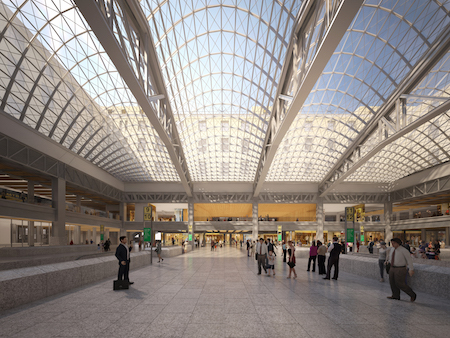
The state and its partners will also solicit a developer for the long-delayed plan to turn the nearly vacant James A. Farley Post Office into a train station and waiting room for Amtrak, LIRR, and New Jersey Transit passengers, ringed by shops and offices.
At 210,000 square feet, the train hall will be roughly equivalent in size to the main room at Grand Central Terminal.
Developers can submit proposals for either or both of the buildings, and the overall project is estimated to cost more than $3 billion.
For the last 10 years, two of the city’s largest real estate developers, Vornado Realty and Related Companies, have tried in vain to transform the post office into what was to be called Moynihan Station, named after the late US senator from New York who first put forward the idea in the early 1990s.
Under a previous agreement with the state, Vornado and Related sought a tenant for the space and even proposed moving Madison Square Garden across the street, but no real progress was made, culminating in last week’s announcement that the playing field was once again open for new proposals.
Over the past year, construction started underneath the Farley Building to expand Penn Station’s West End Concourse, as well as the existing underground corridor below Eighth Avenue connecting Farley to Penn Station and the subway lines there.
This portion of the plan — which also includes new entrances at the 31st and 33rd Street corners of the post office — is scheduled for completion this fall.
The overall redevelopment will be expedited, the governor said, pledging it would be finished in the next three years, with Farley opening before Penn Station’s revamp is complete.
“There has been inaction and complacency around coming up with a substantive, workable plan for Penn Station and Moynihan Station,” said Johnson. “And what [the governor] has put on the table is really a game changer, because he has been able to bring key parties to the table who have acceded to work something out — Amtrak, Madison Square Garden, and the MTA.”
“The RFP has already been issued, so the governor is wasting no time,” said Hoylman.
A spokesperson for Related confirmed in an email that the company expects to respond to the solicitation.
“We continue to passionately believe in the project and are reviewing the materials,” she said. “We applaud the governor’s focus on the revitalization of Penn Station and Moynihan Station.”
Vornado declined to comment.
Cuomo said that $325 million for the project would come from government sources, while “nearly all of the work” will be privately funded, by the chosen developer — in exchange for an interest in the long-term revenue stream generated by the retail and commercial rents.
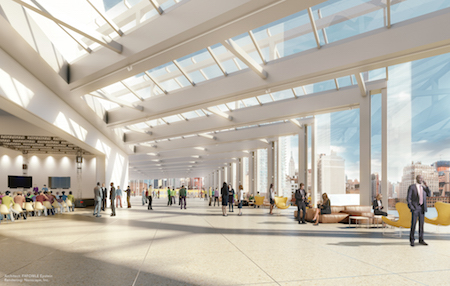
Coming up with a funding formula won’t be necessary for the Javits Center, however. Cuomo said the complex’s $1 billion expansion, for which construction will kick off later this year, would be financed “within existing resources.”
“The Javits Center has long been an economic generator for this state, but we want to build and expand it to ensure it remains a premier venue for the next generation,” he said in a statement. “The new Javits Center will continue to garner millions in economic activity, create jobs, and keep New York’s economic momentum moving forward.”
The proposal will add a glassy 1.2 million-square-feet extension at the northern end of the center — which currently stretches six blocks along 11th Avenue, from 34th to 40th Streets — resulting in a fivefold increase in meeting and ballroom space. In addition, a four-level, 480,000-square-foot garage will be built to accommodate the thousands of trucks already flooding the neighborhood every year to service the convention center — which is the busiest, if not the biggest, in the country.
“There is a massive problem right now, on Ninth, 10th, 11th Avenues, of just choking truck traffic,” Johnson said. “And any plan that is going to move some of these trucks off of the streets is going to help from many standpoints — air quality, pedestrian safety, traffic. So this is a big deal for local residents.”
Last year, the facility hosted more than 2 million visitors, which the governor’s office says supported 17,500 local jobs and generated an estimated 478,000 hotel room reservations as well as an economic boost of $1.8 billion.
Although the convention business is often written off as contributing comparatively little to the economy, Cuomo said that the expansion — a more than 50 percent increase in total floor space — would help bring more trade shows, jobs, and tax revenue to the city. Specifically, the governor asserted, it would add 4,000 full-time, 2,000 part-time, and more than 3,000 construction jobs, and generate an extra $393 million in economic activity every year.
“More convention centers are coming online, and if you want to remain competitive, you have to grow and you have to increase to stay ahead of the competition, and that is just what we want to do with this plan,” Cuomo said. “This will be the convention center of the next generation.”
The governor’s announcement comes on the heels of a $463 million makeover for the convention center just two years ago, which included the addition of Javits North — a semi-permanent structure that will be replaced by the truck garage.
The state previously had plans to nearly double the size of the publicly owned center in 2008, but backed out after the predicted cost exploded.
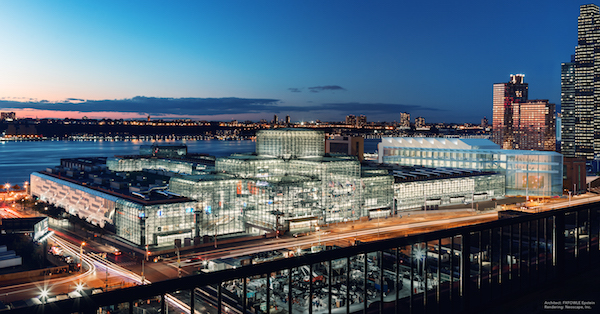
And just four years ago, the governor wanted to raze the Javits Center entirely and replace it with a $4 billion convention center in Queens, a plan that was ultimately jettisoned as well.
“If they move with this expansion in the same thoughtful way as previously, I think our community will be pleased with the outcome,” CB4’s Rubin said of the new plan. “We do have a meeting planned with the Javits Center, so we’re pleased that they do want to involve us in that conversation.”
Manhattan Borough President Gale Brewer has begun putting together a task force — comprised of community board members and local elected officials — to weigh in on the Penn Station development.
“We really plan to be very active in the conversation, because it’s important not just for the millions of commuters that come in, but also the thousands of residents that live in and around that area, that are directly affected by any change,” said Rubin.
Hoylman, who said he is looking forward to working with the Penn Station task force, suggested the area may benefit from a construction command center, like the one that was used to coordinate the rebuilding of the World Trade Center in Lower Manhattan.
“We’re talking about a decade plus of major construction, and we need to make certain that local residents and community boards have input into everything,” he said.



